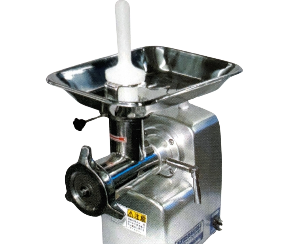How to Choose the Right Meat Cutter Machine for Your Business in Malaysia

Strong 8k brings an ultra-HD IPTV experience to your living room and your pocket.
Running a food business in Malaysia means juggling freshness, speed, and precision. Whether you slice beef, shred chicken, or prepare lamb, the meat cutter machine you use shapes your output.
Picking the right one can save time, cut waste, and boost your kitchen’s rhythm. But with so many styles and types, where do you begin?
Understand Your Business Needs First
Match the Machine with Your Menu
Before diving into models or features, pause and examine what your business serves. A stall that sells satay might need fine slices, while a butcher may demand thick chops. If your business handles various meats—like poultry, mutton, or seafood—choose a machine that adapts to different textures without jamming or slowing.
Count Your Volume and Frequency
Do you cut meat for eight hours daily or only during lunch rush? A busy café or processing centre will require a high-speed, heavy-duty cutter. On the other hand, a smaller eatery might get by with a compact model. Estimate how much meat you prepare each day, then pick a cutter built to handle that pace.
Look at Your Space and Workflow
Measure your kitchen and consider where the machine will sit. Some cutters take up less room but may chop more slowly. Others slice quickly but demand space. Think of your workflow—can staff move freely around the cutter? A machine that blocks walkways or crowds counters might stall your team’s movement and lower efficiency.
Types of Meat Cutter Machines
Manual vs. Electric
Manual cutters cost less and suit small batches. But they demand more strength and time. If you’re processing meat all day, an electric cutter offers speed and ease. With just a press or switch, you slice in seconds, not minutes.
Electric models often include settings to tweak blade speed or thickness. Some even come with safety stops or blade guards to protect hands during busy hours.
Horizontal and Vertical Cutters
Horizontal cutters slide meat sideways across the blade. These work best for clean, thin cuts. Vertical cutters drop meat down onto blades—ideal for chunkier portions or frozen blocks. Know your preferred cut style before making a choice.
Key Features to Inspect
Blade Sharpness and Material
A dull blade tears meat instead of slicing it. That spoils texture and increases waste. Choose stainless steel blades that resist rust and stay sharp longer. Some machines allow quick blade changes, which helps when switching from fish to beef or boneless to bone-in cuts.
Safety Locks and Guards
Fast-moving blades can injure careless hands. Choose a cutter with clear safety shields, non-slip bases, and emergency shut-off buttons. These small details help staff work with confidence and avoid accidents.
Cleaning and Maintenance
Meat residue clings fast. Choose machines with removable trays, smooth surfaces, and accessible parts. These help staff scrub it down quickly after use. A machine that traps bits in hard corners may attract pests and smell over time.
Energy and Power Considerations
Match Power to Task
High-powered machines slice thick or frozen meat easily. But too much power in a small kitchen may overheat wires or trip switches. Balance the motor size with your power supply and task. Don’t overbuy a machine that drains your bills but stays idle half the day.
Noise Levels and Ventilation
Some cutters growl loudly or push out heat. In an open kitchen or tight stall, that might annoy diners or tire staff. Test the machine if possible. Choose one that runs cooler and hums gently if your space demands it.
Durability and Lifespan
Built to Last
Inspect the machine body—does it feel sturdy? Metal casings usually outlast plastic. Handles, feet, and joints should hold firm even after daily use. A machine that wobbles or rattles early won’t survive long in a busy kitchen.
Service and Spare Parts
Machines break. That’s part of the job. But if your cutter’s parts vanish from the market or take months to ship, your work may stall. Choose a model with parts that you can easily find. Some cutters share universal parts—these make repairs quicker.
Portability and Flexibility
Move It When Needed
In tight kitchens, every inch matters. A cutter with wheels or a lightweight design can roll aside when not in use. Foldable trays or adjustable legs also help you adapt your layout.
Handle Different Meats
Some cutters only handle boneless meat. Others grind through bones with ease. If your business serves soups, bone broth, or ribs, pick a cutter that doesn’t crack or jam when facing tougher jobs.
Budgeting the Right Way
Don’t Just Chase Low Prices
Cheap cutter may chop your costs now, but eat your wallet later in repairs. Instead of picking the lowest price, balance your budget with build quality and support. Think long term. One strong cutter can serve you for years, while two weak ones may break down sooner.
Weigh Rental vs. Purchase
Some businesses rent a cutter first to test it. Others buy after testing in real settings. Think about your cash flow. If you’re new to the business or unsure of your meat volume, renting might give you room to explore before locking in a big purchase.
Final Thought
Choosing the right meat cutter machine isn’t just about slicing faster—it’s about crafting smoother flow, cutting down effort, and keeping your kitchen sharp.
Malaysia’s fast-paced food scene, a wise choice can lift your service, sharpen your portions, and free your staff from slow, tiring prep.
Pick a cutter that fits your space, speed, and menu. When your machine moves like part of the team, your whole kitchen thrives.
Frequently Asked Questions
Q1: What should I consider before buying a meat cutter machine for my business?
Start by checking your daily meat volume, kitchen space, and the type of cuts you need. Match the machine’s size, power, and features to your menu and workflow.
Q2: How do I keep a meat cutter machine clean and safe to use?
Pick a machine with smooth surfaces and removable parts. After each use, wash all trays, wipe the blades, and dry the machine properly to prevent rust, bacteria, and build-up.
Q3: Is it better to buy or rent a meat cutter machine?
If you're unsure of your long-term needs or just starting, renting may help you test a model without big upfront costs. Buying suits steady, high-volume businesses that want long-term value.
Note: IndiBlogHub features both user-submitted and editorial content. We do not verify third-party contributions. Read our Disclaimer and Privacy Policyfor details.


